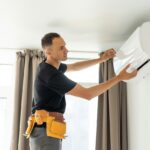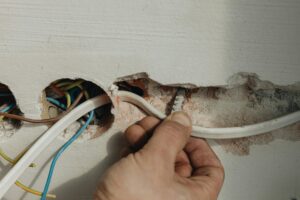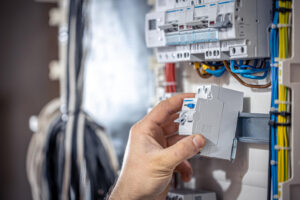
Keeping children safe at home is a top priority for any parent, especially regarding electrical products. Kids are naturally curious and may not understand the dangers associated with electricity. That’s why it is crucial to pick electrical products specifically designed with their safety in mind. Ensuring your home is equipped with child-safe electrical items can prevent accidents and give you peace of mind.
Electrical products come with various safety standards to protect users, but when children are involved, these standards become even more critical. By understanding what to look for in child-safe electrical products, you can make better choices for your home and reduce the risk of electrical repair.
This article will explore how to identify safe electrical products for kids. We will discuss the importance of understanding electrical safety standards, essential features to look for, common household electrical hazards, and tips for teaching kids about electrical safety. With this information, you can create a safer home environment for your family and help your children develop good habits around electricity.
Understanding Electrical Safety Standards for Kids
Understanding electrical safety standards is crucial when choosing products for children. These standards ensure that electrical items are safe for household use, especially where kids are present. In the United States, many electrical products must meet guidelines set by organizations like the Underwriters Laboratories (UL) or the Consumer Product Safety Commission (CPSC).
Look for product labels indicating these organizations have tested and certified them. A UL mark, for instance, means the product meets strict safety requirements and has undergone rigorous testing. Additionally, the CPSC regularly reviews and updates safety regulations for electrical products, ensuring they are safe for everyday use.
International safety marks can also be vital if you are purchasing imported products. Knowing these marks and what they represent can help you make informed choices. Safety certifications are essential because they cover aspects like fire resistance, protection from electric shocks, and durability under normal usage conditions.
Essential Features to Look for in Child-Safe Electrical Products
When choosing electrical products for homes with kids, focus on features specifically designed for safety. The following features are essential to consider:
1. Tamper-Resistant Receptacles (TRRs): These outlets prevent children from inserting objects into the slots, reducing the risk of electric shock.
2. Cord Shorteners: Loose cords present a tripping hazard and can be pulled by curious children. Cord shorteners keep cords organized and out of reach.
3. Outlet Covers and Plates: Use covers that slide over the outlet when not in use or plates that screw into the outlet to prevent access.
4. Surge Protectors with Safety Covers: Choose surge protectors with built-in safety covers that slide over unused outlets.
5. Ground Fault Circuit Interrupters (GFCIs): These devices shut off the electricity when an imbalance or fault is detected, reducing the risk of electric shock. Install them in areas where water is present, like bathrooms and kitchens.
6. Child-Proof Power Strips: These power strips are designed to be difficult for children to open but convenient for adults.
Selecting electrical products with these features can significantly enhance the safety of your home. Always read product reviews and consult recommendations to ensure they meet high safety standards. This small step can prevent potential electric repairs and keep children safe from electrical dangers.
Common Household Electrical Hazards and How to Prevent Them
Understanding and preventing household electrical hazards is key to ensuring children’s safety. One common hazard is overloaded circuits. Plugging too many devices into a single outlet can cause overheating, leading to fires. To avoid this, use power strips with built-in circuit breakers and never daisy-chain multiple strips together.
Frayed or damaged cords are another hazard. These can expose wires and create shock or fire risks. Regularly inspect cords for wear and tear, and replace any that show signs of damage. Teach kids not to pull on cords or play with them to prevent further damage.
Water and electricity are a dangerous combination. Ensure electrical devices are kept away from water sources. Use Ground Fault Circuit Interrupters (GFCIs) in moisture-prone areas, such as bathrooms and kitchens. These devices instantly cut off power if they detect a ground fault, reducing the risk of shock.
Lastly, ensure that outlets are adequately covered and unused outlets have safety plugs. This simple step prevents children from inserting objects into outlets, which can cause electric shock.
Tips for Teaching Kids About Electrical Safety
Teaching kids about electrical safety is vital for their well-being. Start with simple rules like not touching electrical outlets or cords. Explain that electricity is powerful and can be dangerous if not used correctly. Use clear and simple language so they understand.
Setting an example is an excellent way to teach. Always practice safe behaviors around electricity, such as turning off appliances when not in use and keeping electronics away from water. Children are more likely to follow these practices if they see adults doing the same.
Interactive tools, like safety videos and educational games, can also help kids grasp electrical safety concepts. Making the learning process engaging and fun ensures they retain the information better. Reinforce these lessons regularly to keep safety in your children’s minds.
Conclusion
Ensuring your home is safe for kids involves understanding and implementing robust electrical safety measures. Recognizing common household hazards, incorporating safety features in your electrical products, and educating your children are all vital steps in creating a secure environment.
Taking proactive measures, such as inspecting cords, using GFCIs, and installing tamper-resistant outlets, can significantly reduce the risk of electrical accidents. Additionally, it’s important to regularly engage children in safety conversations to make them aware of electricity’s dangers and how to avoid them.
If you need assistance enhancing your home’s electrical safety or require electrical repair, Turner On Services is here to help. Our team of experts can guide you in selecting the safest electrical products and ensuring your home’s electrical system is up to date. Contact Turner On Services today to create a safer home for you and your family.







No comment yet, add your voice below!